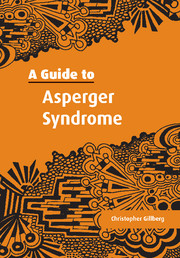Book contents
- Frontmatter
- Contents
- Preface
- 1 Introduction
- 2 Definitions
- 3 Prevalence
- 4 Symptoms in childhood
- 5 Symptoms in adolescence
- 6 Associated psychiatric and social problems
- 7 Other problems
- 8 Strengths
- 9 Background factors
- 10 Cognitive neuropsychology
- 11 Diagnosis and work-up
- 12 Outcome in the longer term: adults with Asperger syndrome
- 13 Attitudes, interventions and treatment
- 14 Who can help?
- 15 What about all those famous geniuses?
- 16 Case vignettes
- Appendices
- Further reading
- Index
5 - Symptoms in adolescence
Published online by Cambridge University Press: 04 September 2009
- Frontmatter
- Contents
- Preface
- 1 Introduction
- 2 Definitions
- 3 Prevalence
- 4 Symptoms in childhood
- 5 Symptoms in adolescence
- 6 Associated psychiatric and social problems
- 7 Other problems
- 8 Strengths
- 9 Background factors
- 10 Cognitive neuropsychology
- 11 Diagnosis and work-up
- 12 Outcome in the longer term: adults with Asperger syndrome
- 13 Attitudes, interventions and treatment
- 14 Who can help?
- 15 What about all those famous geniuses?
- 16 Case vignettes
- Appendices
- Further reading
- Index
Summary
It may be very dificult to recognise and diagnose Asperger syndrome during adolescence. This stems, in part, from the considerable comorbidity problems encountered in this age group. However, to some extent, it is also due to the fact that many adolescents with Asperger syndrome, just like other adolescents, want to be ‘normal’ and not to have any kind of functional impairments. Thus, any suggestion that their ‘problems’ might be ‘symptoms’ that are actually parts of a known ‘syndrome’ may be stubbornly rejected.
It is not uncommon for teenagers with Asperger syndrome to have major problems in the activities of daily life, such as personal hygiene, dressing, school work, eating and sleeping. Mild-moderate feelings of depression and irritability are common, as are various kinds of feelings of identity crisis. Drug abuse, and, albeit rarely, other types of antisocial activities, can occur, and can contribute to delaying the appropriate diagnosis of Asperger syndrome.
At least half of all teenagers with Asperger syndrome whom I have met do not manage personal hygiene in a satisfactory way. They may refuse to wash their hair or to take a shower, complain that the water ‘feels strange when it comes in contact with the body’, that soap and shampoo smell too strong or simply ‘wrong’, and object to washing private parts because it feels ‘odd’, ‘stings’ or ‘is forbidden’.
- Type
- Chapter
- Information
- A Guide to Asperger Syndrome , pp. 43 - 47Publisher: Cambridge University PressPrint publication year: 2002



